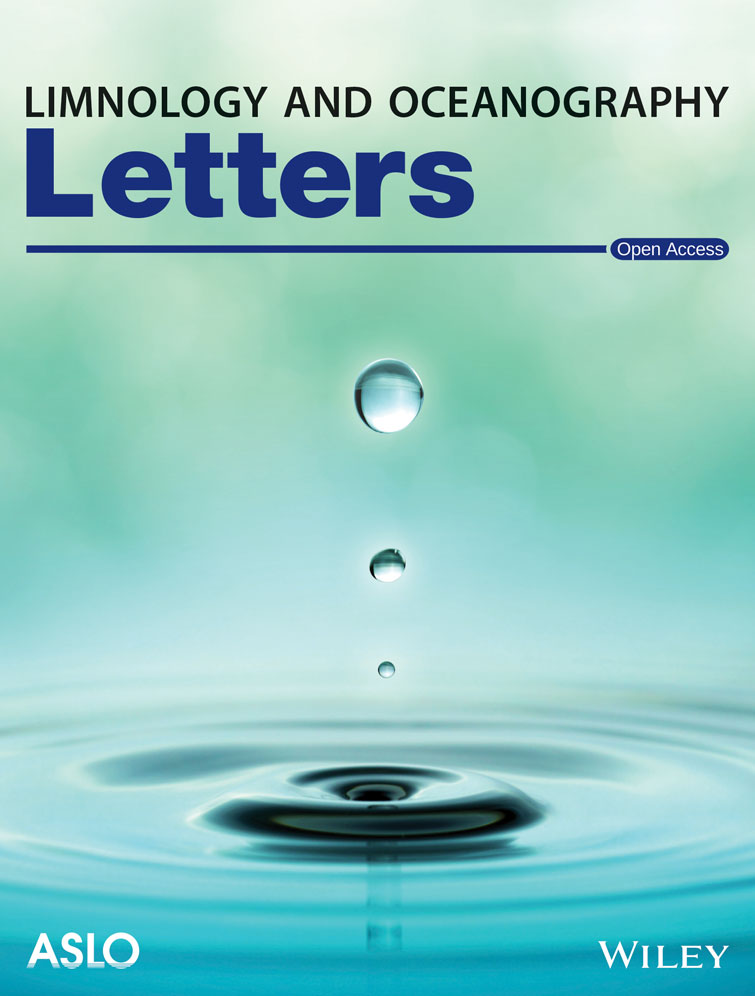从卫星遥感观测预测光合作用-辐照度关系
IF 5
2区 地球科学
Q1 LIMNOLOGY
引用次数: 0
摘要
光合作用-辐照(PI)关系对浮游植物生态学和环境中碳固定速率的量化具有重要意义。然而,PI关系的参数在空间和时间上通常是未知的。在这里,我们使用机器学习、卫星遥感和原位PI关系数据库来建立模型,预测PI参数的季节周期作为卫星观测变量的函数。仅使用表面光、温度和叶绿素,我们预测饱和光()下光合作用速率的R2为58%,预测光饱和度参数()的R2为78%。当在30 - d()和25 - d()时间尺度上平均环境协变量时,可预测性最大,这表明环境历史和群落周转时间尺度对于预测原位PI关系很重要。这些结果将有助于改进基于卫星的初级生产模型的参数化,并量化光合群落中紧急环境整合的时间尺度。本文章由计算机程序翻译,如有差异,请以英文原文为准。
Predicting photosynthesis–irradiance relationships from satellite remote‐sensing observations
Photosynthesis–irradiance (PI) relationships are important for phytoplankton ecology and quantifying carbon fixation rates in the environment. However, the parameters of PI relationships are typically unknown across space and time. Here we use machine learning, satellite remote‐sensing, and a database of in situ PI relationships to build models that predict the seasonal cycle of PI parameters as a function of satellite‐observed variables. Using only surface light, temperature, and chlorophyll, we achieve an R 2 of 58% for predicting photosynthesis rates at saturating light () and an R 2 of 78% for predicting the light saturation parameter (). Predictability is maximized when averaging environmental covariates over 30‐d () and 25‐d () timescales, indicating that environmental history and community turnover timescales are important for predicting in situ PI relationships. These results will help improve the parameterization of satellite‐based primary production models and quantify emergent environmental integration timescales in photosynthetic communities.
求助全文
通过发布文献求助,成功后即可免费获取论文全文。
去求助
来源期刊

Limnology and Oceanography Letters
Multiple-
CiteScore
10.00
自引率
3.80%
发文量
63
审稿时长
25 weeks
期刊介绍:
Limnology and Oceanography Letters (LO-Letters) serves as a platform for communicating the latest innovative and trend-setting research in the aquatic sciences. Manuscripts submitted to LO-Letters are expected to present high-impact, cutting-edge results, discoveries, or conceptual developments across all areas of limnology and oceanography, including their integration. Selection criteria for manuscripts include their broad relevance to the field, strong empirical and conceptual foundations, succinct and elegant conclusions, and potential to advance knowledge in aquatic sciences.
 求助内容:
求助内容: 应助结果提醒方式:
应助结果提醒方式:


